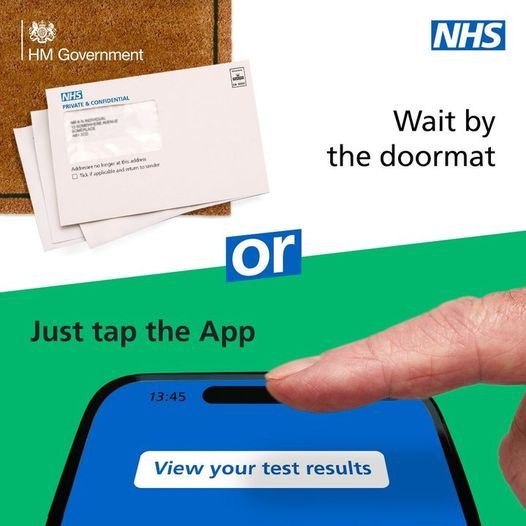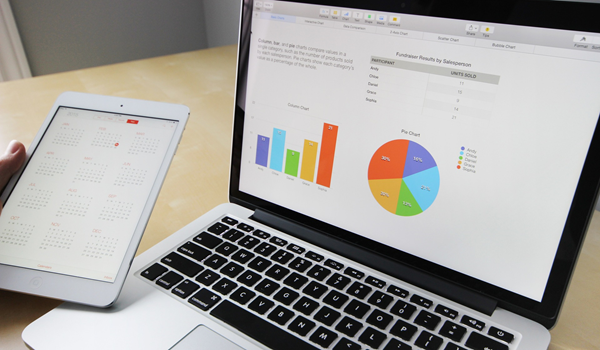Test Results
Results of Tests and Investigations
When you attend for a test of any kind you will be told how long you should expect to wait for the results. Please bear this in mind and call the surgery after 14:00 once sufficient time has elapsed.
Our reception staff are not qualified to comment on results therefore it is your responsibility to check them and make any necessary follow-up appointment with the doctor.
Please note that we do have a strict policy regarding confidentiality and data protection. In this respect we will only give out results to the person they relate to unless that person has given prior permission for their release or if they are not capable of understanding them.
Online Test Results
Blood Tests
A blood test is when a sample of blood is taken for testing in a laboratory. Blood tests have a wide range of uses and are one of the most common types of medical test. For example, a blood test can be used to:
- assess your general state of health
- confirm the presence of a bacterial or viral infection
- see how well certain organs, such as the liver and kidneys, are functioning
A blood test usually involves the phlebotomist taking a blood sample from a blood vessel in your arm and the usual place for a sample is the inside of the elbow or wrist, where the veins are relatively close to the surface. Blood samples from children are most commonly taken from the back of the hand. The childs hand will be anaesthetised (numbed) with a special cream before the sample is taken.
You can find out more about blood tests, their purpose and the way they are performed on the NHS Choices website.
X-Rays
An X-ray is a widely used diagnostic test to examine the inside of the body. X-rays are a very effective way of detecting problems with bones, such as fractures. They can also often identify problems with soft tissue, such as pneumonia or breast cancer.
If you have an X-ray, you will be asked to lie on a table or stand against a surface so that the part of your body being X-rayed is between the X-ray tube and the photographic plate.
An X-ray is usually carried out by a radiographer, a healthcare professional who specialises in using imaging technology, such as X-rays and ultrasound scanners.
You can find out more about x-ray tests, how they are performed, their function and the risks by visiting the NHS Choices website.

View your test results using your NHS App or account
You can view test results in your GP health record using the NHS App or by logging into your account on the NHS website, both provided and managed by the NHS. You will need an NHS login to use the NHS app. If you don't already have one, you will need to set up an NHS login before using the NHS App.
Once registered, you will be able to log in to NHS online services using the NHS App on your Smartphone or through an internet browser using your email address and password.
Information for patients about tests and investigations
Blood Tests
A blood test is when a sample of blood is taken for testing in a laboratory. Blood tests have a wide range of uses and are one of the most common types of medical test. For example, a blood test can be used to:
- assess your general state of health
- confirm the presence of a bacterial or viral infection
- see how well certain organs, such as the liver and kidneys, are functioning
A blood test usually involves the phlebotomist taking a blood sample from a blood vessel in your arm and the usual place for a sample is the inside of the elbow or wrist, where the veins are relatively close to the surface. Blood samples from children are most commonly taken from the back of the hand. The childs hand will be anaesthetised (numbed) with a special cream before the sample is taken.
You can find out more about blood tests, their purpose and the way they are performed on the NHS website by following this link>>
Specimens
Occasionally, you may be requested to provide a urine or stool sample. All specimens must be provided in a suitable container and marked clearly with name, date of birth, date provided and reason for the specimen.
Failure to do so may mean that the test will need to be repeated – Please note that when bringing in a sample to the surgery, only samples in the correct container can be accepted. These are available from reception.
More information on how to collect and store samples can be found on the NHS website using the links below.
How to collect and store a urine sample>>
How to collect and store a stool sample>>
Spirometry
There are a number of chest conditions, which may cause breathing difficulties. Sometimes it is helpful to see how well you breathe out to help diagnose any condition or to see if the treatment you are having is working well. This may involve you blowing into a machine – a spirometer – which measures how well you can breathe out.
There are some requirements necessary before you have the test done, such as withholding use of your usual inhalers for a few hours, or usual tablets relating to any chest condition for 24 hours and avoiding vigorous exercise prior to the test.
Spirometry with reversibility
Sometimes you will be asked to undertake a spirometry test with reversibility. This means you will be asked to blow into the machine without using your inhalers first and then again after you have used your inhalers.
Doppler studies
A Doppler test managed by is undertaken to help measure the flow of blood through the arteries in your arms and legs using sound waves to make a noise when blood flow is detected. The Doppler is used in place of the stethoscope normally used when taking blood pressures. The test is to detect if there are any abnormalities in the flow of blood in your vessels.
A Doppler assessment is a painless procedure and often undertaken as part of any overall assessment of whether provision of support or compression hosiery (full length or knee high stockings or socks) may be helpful to you.
Helicobacter Breath Test
Helicobacter pylori is a germ which can infect the lining of the stomach and can cause a range of stomach problems for some people. Once identified, it can be easily treated with a course of antibiotics and acid suppressing medicines.
Infection with helicobacter pylori can be confirmed with a breath test performed by the nurse at the surgery. A sample of your breath is analysed after you have taken a special drink given to you.
There are some requirements necessary before you take the test such as withholding any regularly taken antibiotics or stomach medications for a few weeks.
Hearing Tests (Audiometry)
Damage to any part of the ear can cause a hearing loss. Problems may occur in the ear canal or the middle ear and hearing loss can be temporary or permanent. A hearing test checks whether there is a problem with any of the different mechanisms that allow a person to hear.
The test involves the use of a special machine called an audiometer, which plays a series of tones through headphones, which you will be asked to wear. The tones vary in pitch and loudness and the nurse conducting the hearing test will control the volume and tone of the sounds relayed through the machine. You will be asked to respond to each sound you hear even if very faint.
The results of a hearing test will form a graph called an audiogram. This will show if there is any pattern to the hearing loss you may be experiencing and help your doctor assess the most appropriate management.
Blood Pressure Check
Blood pressure is the pressure created when blood is forced out of the heart and comes into contact with the walls of the arteries which transport blood around the body. The pressure of blood flowing in the arteries changes according to the different phases of the heartbeat cycle. The pressure in the arteries will be at its highest when the heart is ‘contracting’ and pumping blood out, and at its lowest as the heart relaxes before it pumps again.
Blood pressure is recorded as two numbers: the systolic pressure (as the heart beats) and the diastolic (as the heart relaxes between beats). The numbers are written one above or before the other, the systolic number on top and the diastolic on the bottom.
Your target blood pressure should be less than 150/90 unless you have been told otherwise. If you have any coronary heart disease such as angina or have had a heart attack or stroke, or have diabetes or kidney disease, it is better for your target blood pressure to be less than 130/80.
High blood pressure – hypertension – means that your blood pressure is constantly higher than the recommended target blood pressure. Over time if this is not treated, you become more at risk of heart disease or having a stroke.
You may be asked to come to see a nurse for a blood pressure check and if it is found to be above the recommended target, you may also be asked to have a number of tests – blood tests, an electrocardiogram (ECG), a painless procedure which records the electrical activity of the heart, ambulatory blood pressure (ABP) which records your blood pressure over a 12 hour period during the day – to help your doctor decide if treatment is necessary.
Home Blood Pressure Monitoring
Surgery blood pressure measurements do not always give a true picture of what your blood pressure is doing over your normal day. Some people are found to have a higher blood pressure when at the surgery or when they are not relaxed.
It is now recommended that a better way to check your blood pressure is to measure it yourself twice each morning and evening when you are at home, relaxed and comfortable. This will then give us an idea as to what your blood pressure really is, and whether the measureents we take in the surgery are similar to those you record at home.
If you have your own blood pressure monitor, you may be asked to record a series of readings over a week to be averaged and recorded in your notes. If you do not have your own machine, you may be loaned a machine from the surgery which a nurse will demonstrate how to use. (Please check with reception regarding the availability of blood pressure monitoring equipment).
Information about your laboratory tests
For information on what your laboratory test results mean please visit Lab Tests Online>>
Page created: 29 June 2022
